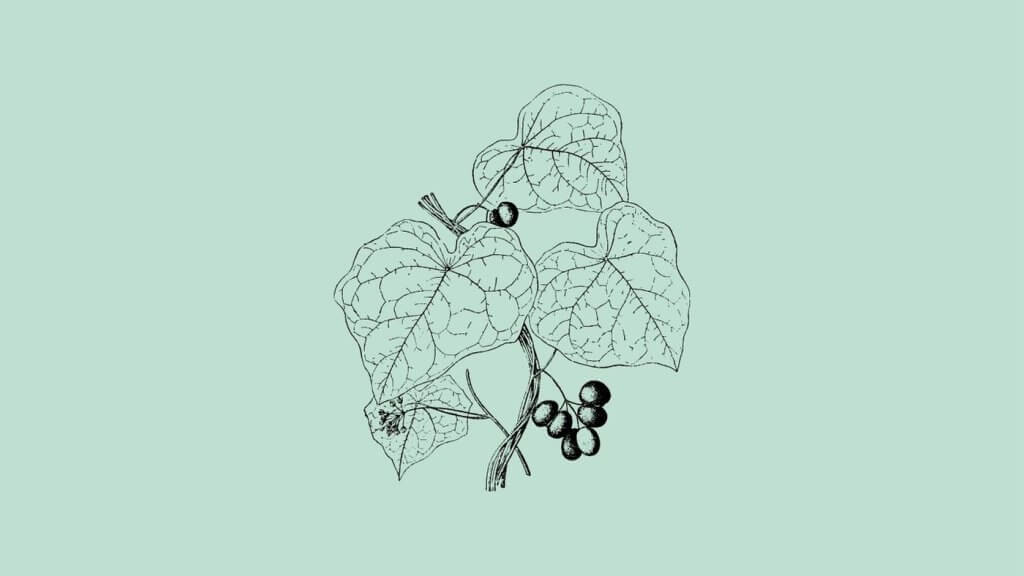Common moonseed (Menispermum canadense) is a deciduous climbing vine that grows sweet, heart-shaped leaves and dark bluish-black grapes. The plant is native to eastern North America and considered invasive in many parts of the United States. All parts of the moonseed vine plant are toxic if eaten by humans.
Common Moonseed Plant Profile
Moonseed earned its name because of the shape of the seed, which looks like a crescent moon.
You might also recognize the common moonseed vine by its scientific name Menispermum canadense.
Other common names for this wild vine include:
What Are You Foraging For Right Now?
We're thrilled to hear your ideas. What would you like to submit today? Feel free to share your thoughts and experiences with us.
- Moonseed vine
- Canada moonseed
- Common moonseed
- Yellow parilla
Like its climbing relatives of the Menispermaceae (the Moonseed family), this species comes from a small genus of deciduous climbing woody vines called Menispermumin.
Prominent features of the common moonseed are dainty, dioecious flowers and clusters of blueish-black grape-esque drupes.
Moreover, this wild but slender twirling vine tends to bloom later in the year, usually in late spring to early summer.
Growing through an underground root system and traveling by suckers means this is a fast-growing vine.
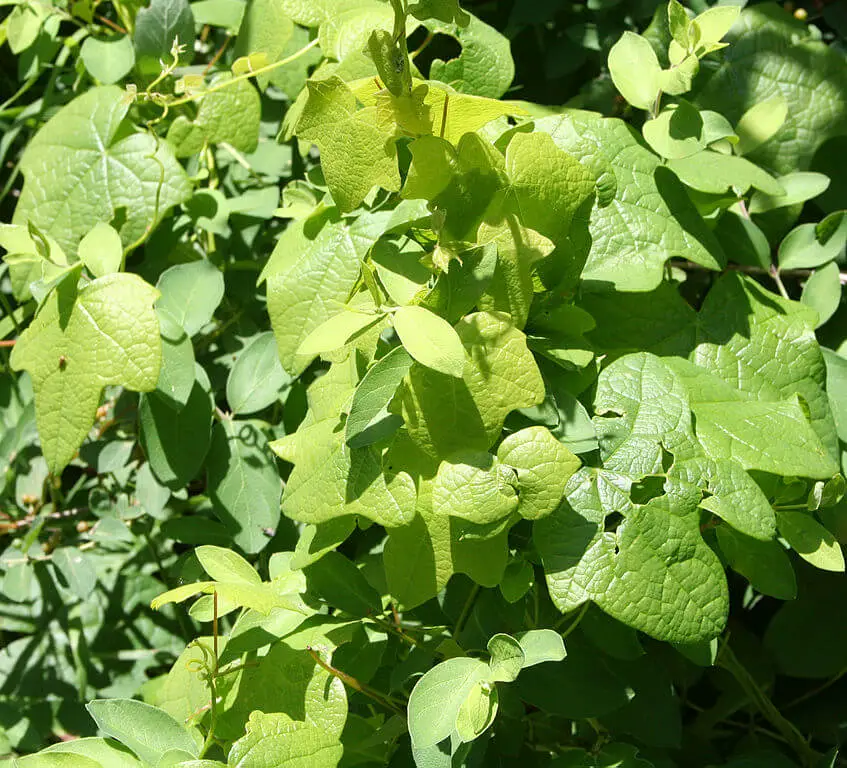
Moonseed Identification
The Canadian moonseed is an ambitious climber and flowering plant, reaching heights of 10 to 15 feet.
Menispermum canadense is an impressive plant and is easy to identify with its:
- Heart-shaped, lobed leaves
- Dangly bunches of about 40 tiny, green-yellow blooms that droop in clusters along the leaf axils
- 18-20 characteristic yellow stamens extending beyond the flower’s petals during the bloom of male flowers.
- Female flowers do not sport such distinctive stamens.
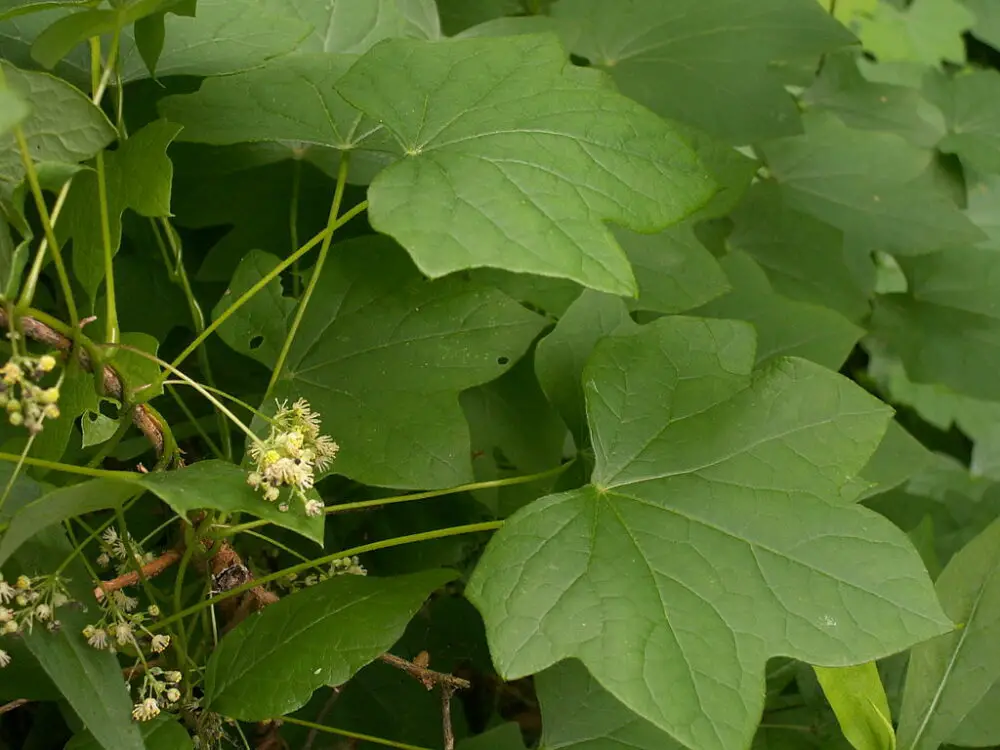
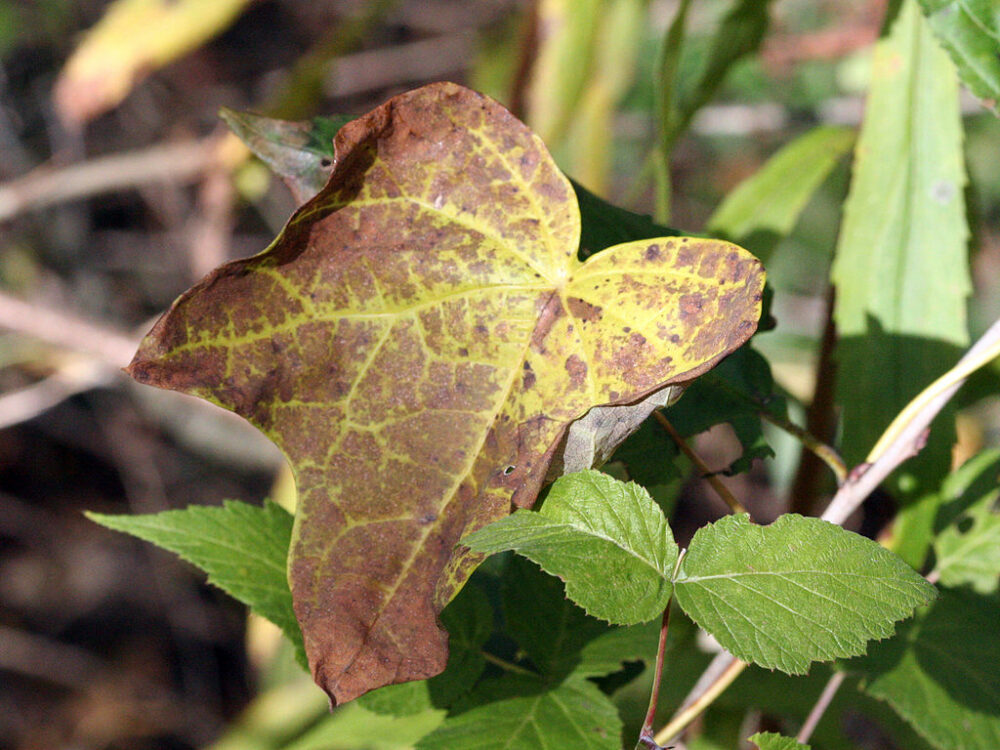
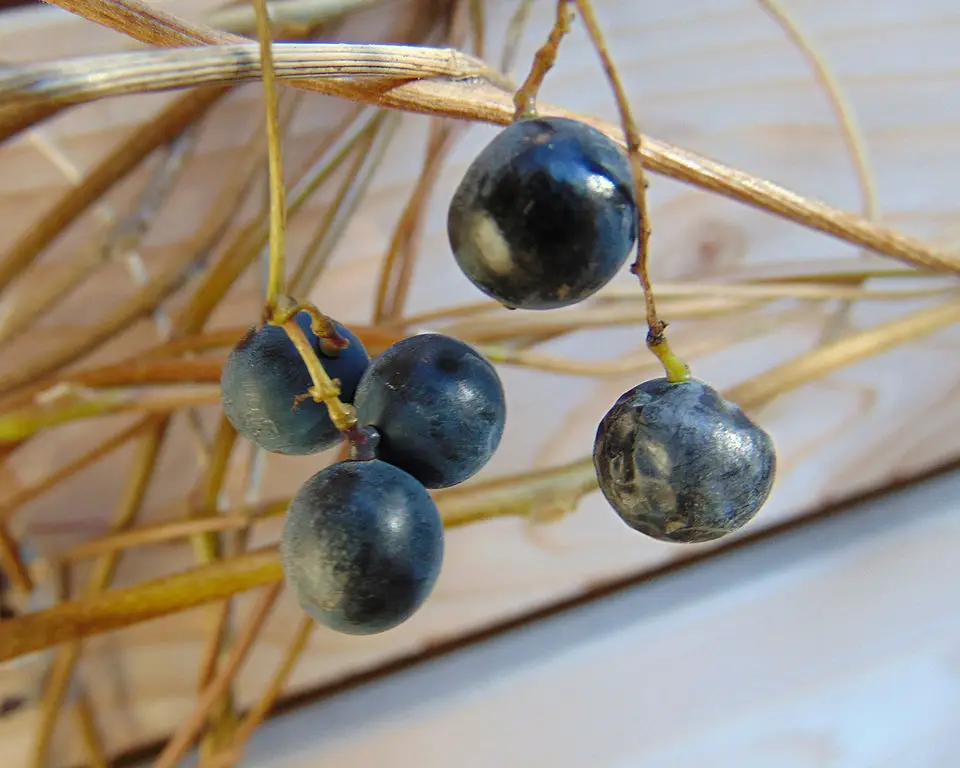
Where does moonseed Grow?
As part of the moonseed family, this flowering plant is native to eastern North America, including southern Canada to northern Florida. You’ll also find it growing from the Atlantic coast to Manitoba and Texas.
As a native plant, the crescent moon is most often grown in:
- Thickets of rocky hillsides
- Deciduous woods
- Moist woods
- Sunny fence rows
- Riparian areas
Moonseed vine is most suitable for USDA hardiness zones through 4 to 8. This is because Canadian moonseed does best in full sun. But, it can also tolerate partial shade.
The great news is this woody plant only needs relatively fertile, moist soil to grow. Plus, with no pruning, it’s a low-maintenance plant.
Climbing a fence or trellis usually shows off moonseed vine the best. But, cutting this plant to the ground every two to three years will help it stay healthy and neat.
Common moonseed is considered invasive in many parts of the United States.
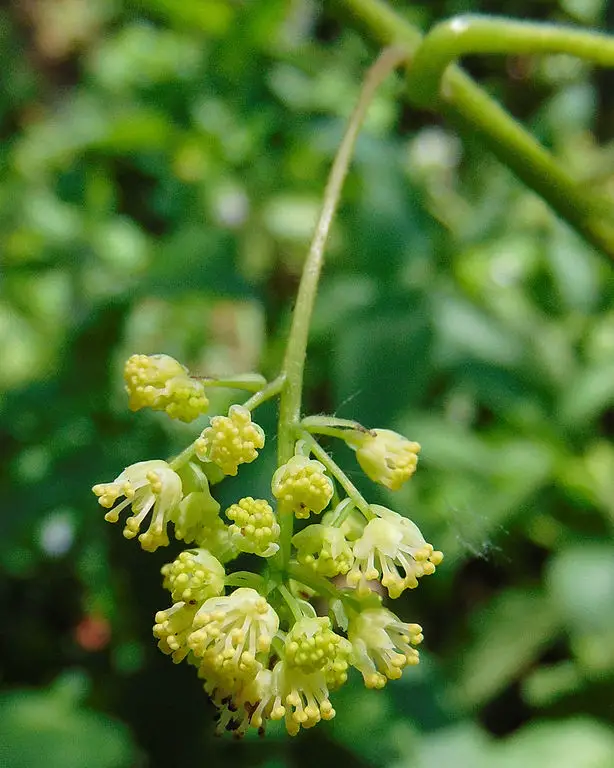
Is Common Moonseed Poisonous?
Canadian moonseed may look nice, but you should not eat this wild vine. Its toxicity levels are significant enough for it to be considered poisonous.
If the moonseed vine’s aesthetic looks have you thinking of growing it in the wooded ground cover of your garden, be wary. If you have small children or pets, they might pick or eat its berries.
Although attractive, this vine should be enjoyed at a distance only.
Is Any Part of the Plant Edible?
The Missouri Department of Conservation states that all parts of the moonseed vine plant are toxic if eaten by humans.
In contrast to wild grapes, the toxicity levels of common moonseed leave the plant toxic from root to stem.
What Happens if you Eat Moonseed Berries?
If you have ingested many of these grape-looking berries, seek immediate medical attention.
Moonseed grapes can be fatal when consumed in copious numbers without direct medical aid.
Common Moonseed vs. Wild Grapes
Common moonseed looks so similar to other wild grapes species (from the Vitis genus) that foragers often mistake them for edible wild fruits.
The most significant difference between common moonseed vs. wild grapes is that only one is edible: wild grape. Common moonseed is toxic in all aspects.
Because they look similar, you need to know how to identify the common moonseed from wild grapes.
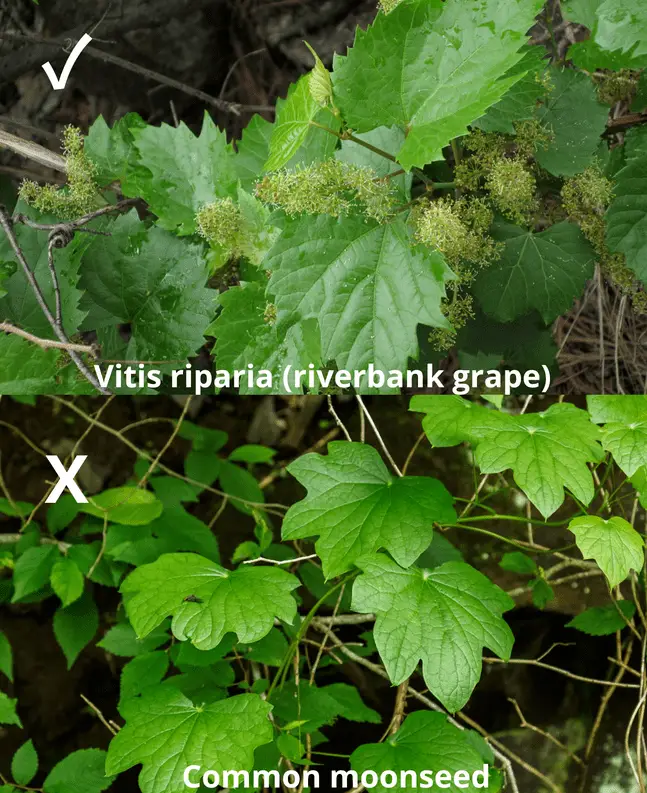
When distinguishing from the wild grape genus (Vitis) in general, look out for:
- Toothed leaves. Wild grapes often have forked tendrils or toothed leaf margins, whereas the Canadian moonseed has smooth foliage. In contrast to wild grapes, common moonseed also has a leaf lobe tip that is abrupt and has a minute sharp point.
- Curling tendrils they use to climb. Wild grapes use their thin, curling tendrils like strong fingers to curl around branches and trees. So they can grow high. In contrast, the Canadian moonseed does not have tendrils and uses its vine to grasp and grow tall.
- The seeds. Unlike the moonseed, wild grapes do not have flattened seeds shaped like a bowl or crescent moon.
You should now be able to differentiate between the two vines, so you can forage safely this summer.
Getting into the great, wet outdoors in search of edible plants, herbs, fruits and fungi is one of Sarah’s favorite outdoor pursuits. She thinks there’s nothing better than combining her passion for hiking with the start of the foraging season. Sarah’s definitely not afraid of a little rain and dirt, it’s all part of the fun.

